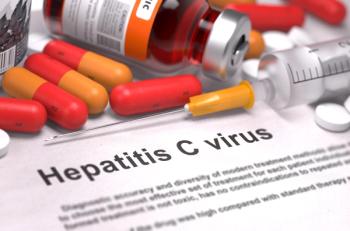
Implementation of Digital Health Technologies in Cardiovascular Disease Management during the COVID-19 Pandemic
In recent years, digital health devices have offered pathways for patients to record and send data, which may ultimately encourage the patient to be more interactive in their disease management.
Advancements in technology have provided patients with many new pathways to manage their cardiovascular health. Telehealth has introduced new ways to enable remote health care delivery in an attempt to provide better access, improved quality, and lower costs to patients, especially during the coronavirus disease 2019 (COVID-19) pandemic.1-3 In recent years, digital health devices have offered pathways for patients to record and send data, which may ultimately encourage the patient to be more interactive in their disease management.
Alivecor, Apple, coala, eko, iRhythm, Omron, and Oculus4 are some of the companies that have a stake in cardiac digital health devices. Generally, cardiac devices are wearables that can track blood pressure, heart rate, electrocardiography (ECG), fitness, and sleep patterns.4 Most wearable devices are used alongside a companion app to record data, allowing physicians to monitor cardiac function and screen for heart abnormalities via email or in real time through a dashboard that can be shared directly with the patient.4
Additionally, medication adherence plays a critical role in treating cardiovascular disease, making pharmacists key players in disease management after initial diagnosis. To keep secondary cardiovascular events at bay, pharmacists can perform counseling and medication therapy management to help the physician better understand a patient’s prognosis. The implementation of digital health devices may add new dimensions to the existing processes and could allow pharmacists to incorporate daily cardiovascular parameters into patient evaluations.
Although studied as beneficial add-ons to current treatment, digital health devices have been used alongside telehealth as standard treatment during the COVID-19 pandemic.1,3 Prior to the recent public health emergency, trusted telehealth platforms and digital devices were limited to those that were compliant with the Health Insurance Portability and Accountability Act (HIPAA). With the Department of Health and Human Services temporarily waiving the penalties affiliated with not following HIPAA, there has been a disorganized adaptation of multiple digital and telehealth services during the pandemic.3 This shift has given foresight into digital health-based models and a better perception into adjustments that need to be made as technology and health care continue to blend.
High smartphone ownership across all demographics may reduce health-related inequalities,5 but the use of smartphone compatible devices does not address patients facing other barriers. In a study comparing a smartphone coaching application to a smartphone tracking application, most participants in both control and intervention groups spoke English as a primary language and had 4 years or more of college education.6
Additionally, in Treskes, et al, for patients who opted out of the intervention of a smartphone health monitoring device versus a regular follow up, one of the reasons classified was “fear of not being able to cope with technology.”7 Whether the issue is education, language, older age, low health literacy, or low socioeconomic status, according to the European Journal of Preventive Cardiology, these patients have a lower likelihood of going online to communicate with a physician or even using a mobile device to track their health.8
There is also a lack of synchronization between the tech industry and health care, which will not change unless manufacturers address regulations around device development and data exchange protections, as well as credible studies showing improved health care outcomes.8 Additionally, the financial burden and time investment for training health care professionals to review data from these devices may be an opportunity cost.8 If manufacturers incorporated quality of life and health care outcomes studies for patients and providers, the integration of such devices into the provider workflow could be streamlined.1
Finally, patient and physician-related barriers may be alleviated if the roles and responsibilities of pharmacists are shifted as digital health advancements continue to occur. Pharmacists are readily accessible health care professionals in the community who could play a significant role in digital health communication as “translators” to further assist patients and providers in understanding how to use data from various apps and devices.9 As proposed in The Digital Apothecary, digital health could also introduce a new “digital pharmacist” role, a pharmacist who specializes in educating patients and training health care professionals on digital health devices.10
As manufacturers continue to develop digital health devices at an unregulated pace, multiple devices have the potential to become important components in cardiovascular disease management. With or without the possibility of introducing a “digital pharmacist,” the COVID-19 pandemic has shown that more research needs to go into addressing the divide between technology and health care before digital health devices can be incorporated seamlessly into practice.1,10
REFERENCES
- Narla, A., Paruchuri, K. and Natarajan, P., 2020. Digital health for primary prevention of cardiovascular disease: Promise to practice. Cardiovascular Digital Health Journal, 1(2), pp. 59-61. doi:10.1016/j.cvdhj.2020.09.002
- Patel, P., 2020. Telehealth - Impacting Access, Cost and Quality - Perficient Blogs. [online] Perficient Blogs. Available at <https://blogs.perficient.com/2015/01/05/telehealth-impacting-access-cost-and-quality-2/>
- Keesara S, Jonas A, Schulman K. Covid-19 and Health Care’s Digital Revolution. New England Journal of Medicine. 2020;382(23):e82. doi:10.1056/nejmp2005835
- Cardiology — Digital.Health. Digital.Health. https://www.digital.health/cardiology. Published 2020. Accessed November 19, 2020.
- Crilly P, Hassanali W, Khanna G et al. Community pharmacist perceptions of their role and the use of social media and mobile health applications as tools in public health. Research in Social and Administrative Pharmacy. 2019;15(1):23-30. doi:10.1016/j.sapharm.2018.02.005
- Persell S, Peprah Y, Lipiszko D et al. Effect of Home Blood Pressure Monitoring via a Smartphone Hypertension Coaching Application or Tracking Application on Adults with Uncontrolled Hypertension. JAMA Network Open. 2020;3(3):e200255. doi:10.1001/jamanetworkopen.2020.0255
- Treskes R, van Winden L, van Keulen N et al. Effect of Smartphone-Enabled Health Monitoring Devices vs Regular Follow-up on Blood Pressure Control Among Patients After Myocardial Infarction. JAMA Network Open. 2020;3(4):e202165. doi:10.1001/jamanetworkopen.2020.2165
- Frederix I, Caiani E, Dendale P et al. ESC e-Cardiology Working Group Position Paper: Overcoming challenges in digital health implementation in cardiovascular medicine. European Journal of Preventive Cardiology. 2019;26(11):1166-1177. doi:10.1177/2047487319832394
- Vatanka P, Lofton J. Re-envisioning the Pharmacist's Role in the Era of Digital Health—CPhA's Inaugural Digital Health Conference.
- Aungst T. Creating a 'Digital Pharmacist' for the Future of Pharmacy Care — The Digital Apothecary. The Digital Apothecary. https://www.thedigitalapothecary.com/pharmacy-innovation-news/2019/3/23/creating-a-digital-pharmacist-for-the-future-of-health-care. Published 2019.
Newsletter
Stay informed on drug updates, treatment guidelines, and pharmacy practice trends—subscribe to Pharmacy Times for weekly clinical insights.




















































































































































































































